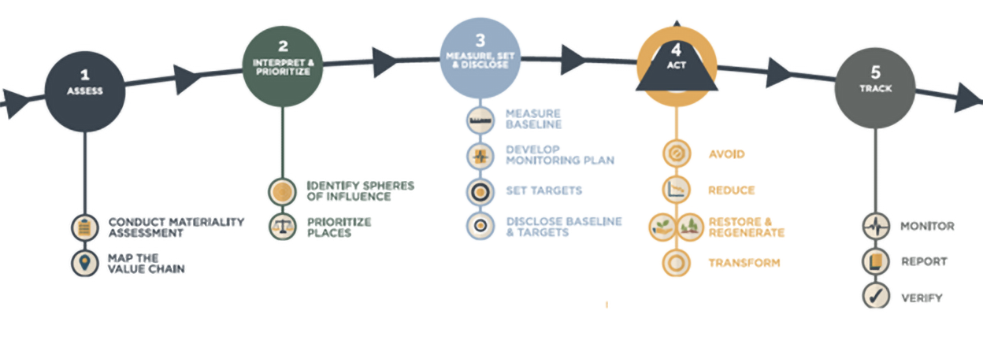What can investors most productively do to support the development and adoption of nature science-based targets (SBTs) for their investees?
In February 2021, Preventable Surprises held a week-long online dialogue to set an investor agenda for biodiversity loss. In this Chatham House-rule, text-only online format, participants were invited to discuss and respond to a series of “provocations” – short texts written by leading experts, designed to yield creative thinking, test the wisdom of the crowd and challenge the status quo. We are publishing these provocations on our blog this month in an effort to broaden this conversation.
By Erin Billman, Executive Director at the Science Based Targets Networks.
The Science Based Targets Network (SBTN) is currently developing the methodologies for companies and cities to set science-based targets – measurable, actionable, and time-bound objectives, based on the best available science, that allow actors to align with Earth’s limits and societal sustainability goals. SBTs differ from traditional ESG approaches, in that they explicitly integrate global ‘guardrails’ for biodiversity metrics for a ‘safe and just’ future identified by the Earth Commission, which David Obura mentions in his Provocation. By contrast, traditional ESG measures focus on incremental improvement.
The methodologies under development and targeted for release in 2022 will cover nature broadly and the drivers of nature loss, across land, freshwater, ocean realms and including both biodiversity and nature’s contributions to people. As a first step, SBTN released initial corporate guidance. Companies and investors are encouraged to read this guidance, take steps to prepare by assessing their value chain-wide impacts and dependencies on nature, join the SBTN corporate engagement program if they are motivated to be involved in co-creation, and take no-regrets actions for nature in the meantime.
How companies can assess, prioritize, measure, address and track their impacts and dependencies on nature in line with science:

Specifically, actions should follow the modified conservation hierarchy:

| Avoid – Prevent impact happening in the first place, eliminate impact entirely | Reduce – Minimize impacts from a baseline value, without eliminating them entirely | Restore – Initiate or accelerate the recovery of an ecosystem with respect to its health, integrity and sustainability with a focus on permanent changes in state (adapted from Society of Ecological Restoration)
Regenerate – Actions designed within existing land uses to increase the biophysical function and/or ecological productivity of an ecosystem or its components, often with a focus on specific nature’s contributions to people (e.g. on carbon sequestration, food production, and increased nitrogen and phosphorus retention in regenerative agriculture ( adapted from FOLU 2019) |
Transform – Actions contributing to system-wide change, notably the drivers of nature loss, e.g. through technological, economic, institutional, and social factors and changes in underlying values and behaviors (adapted from IPCC and IPBES 2019c) |
| E.g., 100% avoidance of deforestation or conversion of intact ecosystems; avoid sourcing from fisheries with stocks beyond sustainable levels | E.g., Reduce emissions, pollution, water use | E.g., Regenerate agriculture practices | E.g., Link executive compensation to environmental and social performance; join industry coalitions to share best practice and pool data collection resources |
Investors have a vested interest (and stewardship impact on) corporates and city municipalities, and therefore must support the development and adoption of nature SBTs. They can play several essential roles right now: 1) build support, momentum and expectation for SBTs for nature with both companies and municipalities in their portfolios and with other investors, 2) start integrated messaging with climate expectations, as climate change is one of the key drivers of nature loss, and we can’t solve climate change without nature, and 3) advocating for the actions companies and cities can take now to benefit nature and people.
What tactics can investors deploy to play these three roles effectively? How can existing tactics such as a) bilateral engagement, b) joint platforms (e.g., on deforestation-free portfolios), and c) existing tools (e.g., ENCORE to prioritize sectors and better understand portfolio impacts and dependencies), be leveraged? Given SBTs offer a form of mindset or paradigm change from standard incrementalist ESG approaches, how in particular can ideas in the ‘transform’ category, referenced above, create breakthroughs?